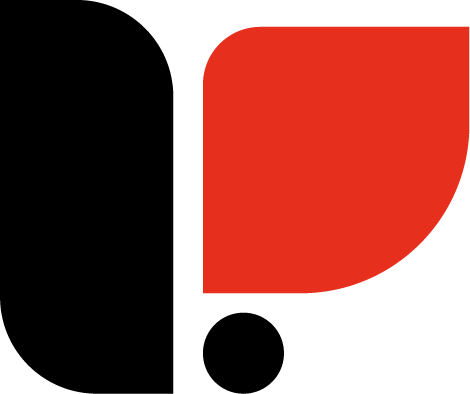LinkedIn has over 774 million users worldwide. This makes it one of the top-used social media platforms. Yet underutilised. However, a number of businesses have identified the importance of incorporating LinkedIn into their marketing strategy to build awareness, connections, networks, and revenue. It is a powerful tool, yet only a few people utilise its marketing power for their brands.
What Is Linkedin Marketing?
For many successful marketing strategies today, LinkedIn plays a very pivotal role. The process of using LinkedIn to make connections, generate leads, improve brand awareness, and foster business relationships and partnerships while also driving traffic to your website is known as LinkedIn marketing. It is now a part of digital marketing, just like Facebook, Instagram or Twitter.
LinkedIn isn’t used as a socialisation tool alone but as a tool to market brands to the online world while increasing revenue for that brand. Instead of being intimidated by people’s successful growth, promotions, and completed courses, you can use it to reach your target audience and build brand awareness.
Why Do You Need Linkedin Marketing?
Regarding social media marketing, what comes to mind first is Facebook, Instagram and Twitter, the most common social media platforms used, which are all good in social media marketing. However, leaving LinkedIn out of your strategy is a way of harming your business. As a professional platform, LinkedIn generates leads 227% more effectively than Facebook and Twitter combined.
Here are some benefits of LinkedIn marketing to businesses:
Connect To The Right Target Audience
Just like every other social media platform, LinkedIn is also a great way to connect to the right people for your business.
Many businesses use LinkedIn, making the platform fit for B2B connections. This is unique because other platforms can’t offer that.
With over 700 million professionals, LinkedIn provides access to a niche audience actively engaged in professional pursuits. This extensive network comprises diverse industries, job roles, and expertise levels, creating a niche audience of individuals actively engaged in professional endeavours. For businesses, this means having direct access to decision-makers, industry leaders, and potential collaborators keen on networking, sharing insights, and exploring business opportunities.
The platform’s user base facilitates targeted outreach, allowing businesses to tailor their messages to specific professional segments and engage with a relevant and receptive audience. In simple terms, you get to cut through the noise and focus on connections that are of more value to your business.
Brand Credibility and Awareness
The text you have written is well-drafted and reflects the importance of a robust LinkedIn presence for enhancing brand credibility and awareness. A strong LinkedIn profile showcases a business’s commitment to professionalism and industry expertise. It is a digital business card that communicates a brand’s dedication to maintaining a professional image.
Differentiating your business from competitors is crucial, and a brand’s core values, mission statement, and business goals play a vital role in achieving this. A well-crafted LinkedIn profile can help businesses showcase their expertise, achievements, and contributions to the industry, enhancing brand credibility and instilling trust among potential clients, partners, and collaborators.
In today’s competitive business landscape, a strong LinkedIn presence has become a powerful tool for reinforcing a brand’s credibility and establishing itself as a reputable player in the market. Regular updates, thoughtful engagement, and transparency are key to building a strong LinkedIn presence that enhances brand visibility and awareness.
Thought Leadership
Demonstrating thought leadership on LinkedIn can be highly effective for individuals and companies. With a focus on businesses and careers, LinkedIn provides an ideal platform to showcase credentials such as university degrees, professional certifications, and company awards. These credentials can help establish a reputation as a thought leader in a particular field or industry.
Individuals and companies can enhance their thought leadership reputation by posting valuable content and comments on the platform. For instance, a logistics company can post an FAQ video featuring its CEO answering common questions related to the field. This kind of content can solidify the company’s reputation as an expert in the industry.
Lead Generation
LinkedIn serves as a goldmine for lead generation, offering a platform where businesses can connect with decision-makers and potential clients.
LinkedIn’s unique position as a professional networking platform transforms it into a goldmine for lead generation. The platform’s user base comprises professionals in various roles, including decision-makers and key influencers within organisations. This provides businesses with a direct avenue to connect with individuals who hold the power to make decisions or influence purchasing choices. Businesses can generate quality leads by strategically engaging with targeted professionals, sharing valuable content, and participating in industry discussions. The ability to nurture relationships within a professional context on LinkedIn enhances the likelihood of converting leads into valuable clients or collaborators.
LinkedIn Marketing Best Practices
Here are some tips to help you get the best out of LinkedIn for Marketing
Optimise Your Profile: Your LinkedIn profile is your digital storefront. Craft a compelling company profile with a clear logo, concise yet impactful description, and links to your website. This ensures your brand is easily discoverable, reflecting professionalism and a commitment to transparency.
Engaging Content Strategy: Keep your audience captivated with a dynamic content strategy. Share regular company updates, milestones, and behind-the-scenes glimpses. Blend these updates with valuable industry insights, utilising multimedia content like images, videos, and infographics for variety and visual appeal. Establish your business as a go-to source of information within your industry.
Utilise LinkedIn Ads: Leverage LinkedIn’s advertising features for precise targeting. Reach specific demographics, industries, or job titles aligned with your business objectives. Craft compelling ad campaigns showcasing your offerings, promotions, or key messages. Elevate your brand’s visibility and drive engagement by ensuring your advertisements reach the most relevant and receptive audience.
Engage in Groups: Actively participate in relevant LinkedIn groups within your industry. Connect with professionals, share insights, and contribute to discussions. This strategic involvement expands your network, positions your business as an active participant, and fosters relationships, building credibility within your industry community.
Regular Updates: Consistency is key to a visible and active LinkedIn presence. Regularly update your company page with fresh and relevant content, including company updates, industry news, and engaging multimedia. A consistent posting schedule reinforces brand awareness, keeps your audience engaged, and demonstrates your commitment to ongoing communication and transparency, enhancing your positive perception within the LinkedIn community.
How to Use LinkedIn for Marketing
Create a showcase page: You have products or services you want to sell as a business. Showcase those on the showcase page with detailed information. This, in turn, creates a unique brand experience for a targeted audience. Showcase Pages offer an excellent avenue to highlight key offerings and capture the interest of a niche market segment.
Articles: Try to harness the power of LinkedIn’s publishing platform to share in-depth articles. This feature enables businesses to showcase their expertise, share valuable insights, and establish thought leadership within their industry. By regularly publishing well-crafted articles, businesses can foster engagement, build credibility, and position themselves as authorities in their field.
Use Rich Media: knowing what kind of content to use on social media is good, but it must be rich. This means ‘Quality’. On LinkedIn, share visual content such as videos, infographics and presentations that are appealing and attention-grabbing to your target audience. Utilise these multimedia tools to convey complex ideas, showcase products or services, and enhance the overall visual appeal of your LinkedIn presence.
Leverage LinkedIn Analytics: Gain valuable insights into the performance of your content by utilising LinkedIn Analytics. Monitor key metrics to understand what resonates with your audience, including engagement levels, click-through rates, and demographics. This data-driven approach allows you to refine your marketing strategy, focusing on content that generates the most impact and optimising your overall LinkedIn marketing efforts.
Networking Tips
These are 4 LinkedIn networking tips:
- Personalised Connection Requests: When connecting with professionals, include a personalised message to establish a meaningful connection.

- Engage in Conversations: Actively engage with your network by commenting on posts, sharing insights, and participating in discussions.
- Endorsements and Recommendations: Offer endorsements and seek recommendations to enhance your professional credibility.
- Participate in Events: Attend and engage in virtual or in-person events to expand your network and stay updated on industry trends.
LinkedIn marketing has become indispensable for businesses to establish a strong online presence, connect with professionals, and drive meaningful results. By implementing best practices, creating compelling content, and embracing networking strategies, your business can unlock the full potential of LinkedIn, propelling its growth and success in the digital age.





